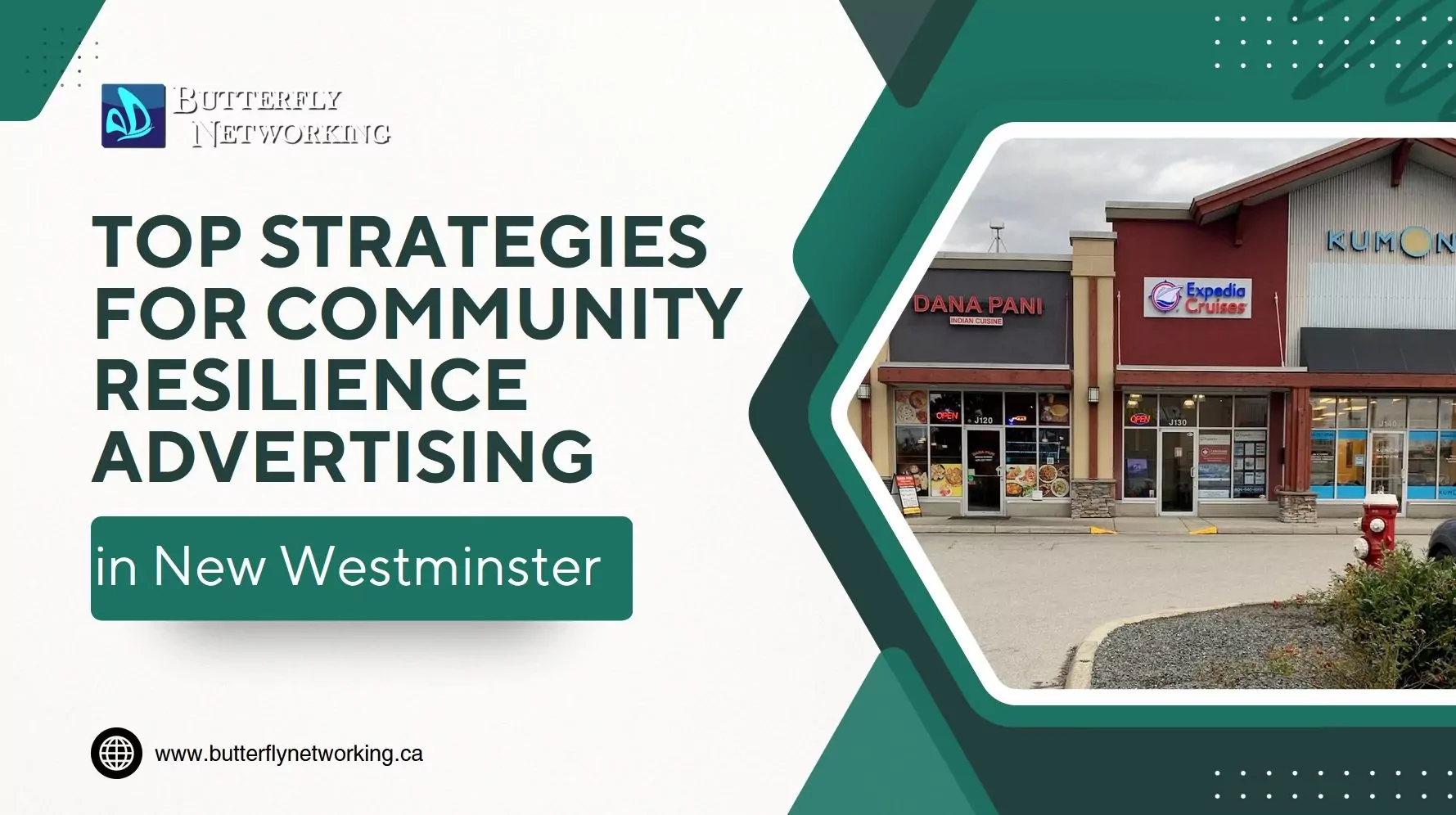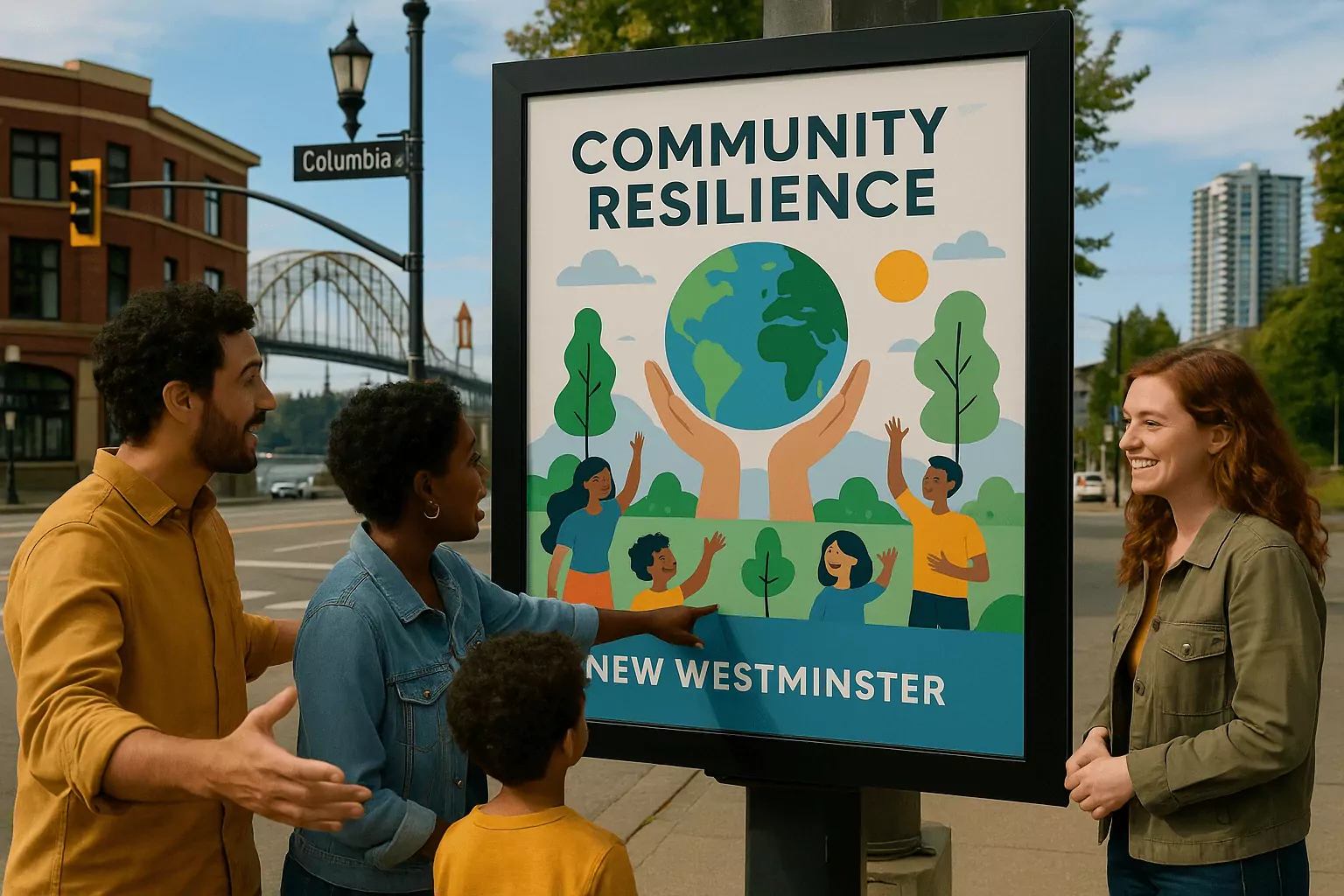Top Strategies for Community Resilience Advertising in New Westminster
Effective tactics for boosting community resilience advertising in New Westminster, empowering local businesses and organizations to thrive together.

Community resilience advertising New Westminster is about more than promotion; it is about strengthening local preparedness, trust, and everyday connection. In practice, it means crafting campaigns that help neighbors find resources, support small businesses, and stay informed during disruptions. Effective local advertisers learn to combine empathy-led messaging, relevant offers, and timely updates that matter to residents across Queensborough, Sapperton, Uptown, Downtown, and beyond. By aligning brand objectives with civic outcomes, your organization can build measurable goodwill while driving sustainable growth. To get started, anchor your plan in real community needs and keep creative nimble for rapid response. Explore proven tactics and examples below, and see how community resilience advertising New Westminster can help your brand make a meaningful local impact.
Hyperlocal audience mapping for community resilience advertising New Westminster

Successful campaigns begin with precise audience understanding at a neighborhood level, not just a citywide view. In New Westminster, demographic and psychographic profiles vary meaningfully between Queensborough's family homes, Sapperton's healthcare workforce, and Downtown's renters and students. Use municipal data and sources like Statistics Canada to map language preferences, age clusters, and household composition across postal codes. These insights guide tone, channel choices, and timing for updates related to preparedness, recovery, and local initiatives. A campaign targeting flood readiness by the Fraser River, for example, should speak differently to waterfront residents than to inland commuters. Put your team in the mindset of helpful neighbors, not distant marketers, and your message will resonate.
Build nuanced personas that reflect real community roles such as caregivers, shift workers, small business owners, and new immigrants. For each persona, outline needs during blue-sky periods and during disruptions, then connect those needs to your product's supportive benefits. Combine hyperlocal SEO with proximity targeting so residents find you when it is most relevant, especially on mobile. Keep your Google Business Profile updated with hours, accessibility details, and crisis notices to reinforce reliability and availability. Publish neighborhood-specific landing pages that explain what you offer and how you help during seasonal events, storms, or supply chain interruptions. This level of specificity increases both engagement and perceived utility.
A practical example is a Queensborough grocer building a neighborhood text list for service updates, discount bundles, and donation drives. The grocer could segment lists for seniors, families, and essential workers, delivering relevant offers tied to pay cycles or school schedules. During heavy rain advisories, the message might highlight delivery windows, emergency kits, and curbside pickup instructions. After the event, the grocer can thank volunteers, share outcomes, and invite feedback to improve future readiness. Over time, the merchant establishes trust as a dependable node in the community safety net. That ongoing trust strengthens brand loyalty while supporting social good.
Multi-channel mix for community resilience advertising New Westminster
A balanced channel mix ensures vital messages reach people where they already spend time. On owned channels, publish clear updates on your website and blog, then syndicate with concise summaries on email and SMS. Reinforce visibility with search-optimized articles about preparedness tips, resource lists, and neighborhood events to capture organic demand. On paid channels, combine geofenced social ads and responsive search ads with callout extensions for time-sensitive notices. Consider out-of-home inventory such as bus shelters and community boards to reach residents without reliable internet. This layered approach keeps your information accessible and timely across the city.
Local media and community partners expand reach and credibility when seconds count. Collaborate with organizations like the New West Chamber of Commerce and neighborhood associations to cross-amplify important updates and resource drives. Use short-form video on platforms like Instagram and YouTube to demonstrate how to access services, pick up supplies, or donate. Pair those with print inserts or flyers in strategic locations like libraries, community centers, and seniors residences. Build evergreen content around seasonality, then slot in rapid-response messages during unforeseen events. When you treat each channel as part of an integrated safety net, your campaign is more resilient and equitable.
Experimentation will reveal which combinations work for specific neighborhoods and scenarios. For instance, healthcare workers in Sapperton may respond to late-night SMS reminders about extended hours, while families in Uptown may prefer Saturday morning email updates and school-based flyers. Downtown renters might rely more on social feeds during commuting hours and transit shelters along key routes. Analyze engagement patterns, then shift budget to the best-performing touchpoints as conditions change. Maintain a central message hub on your site so every post, ad, and sign points back to verified details. Consistency reduces confusion and builds trust over time.
Partnerships and trust-building in community resilience advertising New Westminster
Trust is an asset you cannot buy, but you can build it through consistent action and credible partnerships. In New Westminster, consider collaborating with the City, libraries, schools, cultural organizations, and nonprofits to distribute reliable information. Joint announcements with recognized institutions help your messages cut through noise, especially in stressful situations. Co-branded initiatives like donation drives, volunteer sign-ups, or preparedness workshops can multiply your reach and impact. Ensure your brand role is supportive and service-oriented rather than self-promotional. When residents see you standing beside community leaders, they are more likely to engage meaningfully.
Focus on inclusive partnerships that reflect the city's diversity and evolving needs. Work with groups serving seniors, youth, newcomers, and people with disabilities to shape content that is practical and respectful. Value lived experience by inviting community members to review drafts and participate in message testing. Publicly share what you learned and how you adapted to be more helpful and accessible. When trust is low, consider having institutions lead the message while your brand provides resources behind the scenes. Over time, transparency and humility earn durable goodwill that outlasts any single campaign.
Community storytelling builds social proof and motivates participation without sensationalism. Capture short interviews with volunteers, caregivers, and small business owners explaining what worked and what could improve. Package these as short videos or quotes alongside factual resources from civic sources. Regularly update the outcomes of your initiatives so residents can see visible progress and resource allocation. Keep calls-to-action clear and non-coercive, such as inviting feedback or sharing a resource post with a neighbor. These practices make your campaigns feel human, credible, and locally rooted.
Crisis-ready content, inclusivity, and accessibility for community resilience advertising New Westminster
Your content should be pre-planned for known risks and adaptable for unknown events. Build a modular library of templates for advisories, resource updates, and recovery stories that can be edited in minutes. Use plain language with essential facts at the top, then add context and links for deeper reading. Provide translations for common local languages and include visual aids to help residents scan quickly. Ensure font sizes, color contrast, and link clarity meet accessibility best practices for digital assets. Test your content on mobile devices since many residents rely on phones during disruptions.
Accessibility and inclusion are non-negotiable in resilience communications. Include captions and transcripts for videos, text alternatives for images, and phone-friendly layouts for long guides. Offer multiple delivery methods such as SMS codes, printed flyers, and community bulletin updates to reduce digital divide issues. Avoid jargon and replace it with actionable steps, addresses, and operating hours residents can use immediately. Provide a clear way to ask questions or request assistance, such as a staffed phone line or a monitored inbox. When you remove friction, more people benefit and your brand is seen as genuinely helpful.
Tie content to seasonal and local risk calendars so you are proactive rather than reactive. For example, before spring freshet, publish checklists for flood-readiness and host a livestream Q&A with local partners. If air quality alerts rise, share safe indoor activity guides and small-business delivery options for vulnerable residents. During heat events, coordinate with community centers to promote cooling locations and hydration tips. In each case, guide residents to official sources for authoritative updates and keep your role focused on enablement. Doing so positions your brand as a reliable community ally throughout the year.
Measurement, attribution, and iteration in community resilience advertising New Westminster
Define success metrics that reflect both business outcomes and social impact from the start. Track fast signals such as SMS sign-ups, call volume, and landing page visits alongside slower indicators like brand trust and partner referrals. Use UTM parameters on links, geo-tag content by neighborhood, and log all campaign timelines for post-mortems. Where possible, connect digital actions to offline outcomes like event attendance, supply kit pickups, or volunteer hours. Conduct short resident surveys to learn which messages felt most useful and which channels delivered the right timing. These insights guide smarter budget allocation and content optimization.
Dashboards should align teams across marketing, operations, and partnerships for a shared view of progress. Segment performance by neighborhood to see if Downtown tactics differ from those in Queensborough or Sapperton. Attribute lift not only to paid media but also to partner amplification and earned coverage. When metrics dip, review creative clarity, posting windows, and call-to-action friction points. Update your templates, landing pages, and channel plans with each learning cycle for compounding gains. Treat every campaign as an opportunity to improve the next one.
Qualitative feedback enriches the numbers with lived experience. Capture quotes from residents, frontline staff, and partner organizations about what made navigating a situation easier. Note barriers such as confusing map links, missing translation, or crowded pickup windows and fix them quickly. Share summaries with stakeholders so everyone understands what changed and why. Celebrate small wins openly, like faster checkouts or fuller donation bins when messages improved. This feedback loop keeps your campaigns relevant, respectful, and increasingly effective.
Conclusion

Community resilience advertising in New Westminster works best when it is neighborly, precise, and easy to act on. Start with hyperlocal audience mapping, layer an integrated channel mix, and co-create with trusted partners for credibility and reach. Build inclusive, accessible content that residents can use quickly, then measure both social impact and business outcomes. Treat each campaign as a learning sprint so your playbook gets stronger with every season and situation. If you are ready to build a plan that increases trust and delivers results, Butterfly Networking can help.
Need help making marketing less mysterious? Let's chat! Carla@ButterflyNetworking.ca | 778-835-4032 | or book a call New West Spotlight Newsletter - Free Consultation | TidyCal
Frequently Asked Questions

What is community resilience advertising, and why is it important in New Westminster?
Community resilience advertising aligns your brand's messaging with local readiness, recovery, and connection goals. In New Westminster, that means communicating helpful information, timely updates, and supportive offers that make daily life easier during change. It is not about fear-based promotion but about being a dependable neighbor with practical solutions. By integrating resources, inclusive language, and verified links, your campaigns reduce confusion and build trust. This trust translates into stronger engagement, higher loyalty, and more sustainable outcomes for both residents and businesses. Done well, it turns marketing into a civic asset.
Which channels work best for reaching diverse neighborhoods across the city?
The best channel mix depends on the neighborhood, the message urgency, and access to technology. Mobile-friendly web pages, SMS alerts, and geofenced social ads often perform well for urgent notices. For broader education and preparedness content, blogs, email series, and short-form video can sustain attention over weeks. Out-of-home placements and printed flyers help reach those with limited internet or who prefer offline formats. Partner channels like schools, libraries, and nonprofits add credibility and reach where your brand is less familiar. Test combinations by neighborhood and time of day, then shift investment to the top performers.
How should small businesses budget for community resilience advertising in New Westminster?
Start with a modest, flexible budget that prioritizes essential owned assets and rapid-response capacity. Invest in a centralized landing page, SMS setup, and a repeatable content calendar before scaling paid media. Allocate funds to geofenced social and search for urgent or high-impact campaigns, then taper as organic reach builds. Reserve a contingency line for unexpected events to avoid pausing when communications matter most. Measure outcomes like sign-ups, attendance, and partner referrals to guide future allocations. Over time, your most efficient channels will reveal themselves and inform a sustainable spend profile.
How can we measure impact beyond clicks and impressions?
Pair digital metrics with community-centered indicators to capture true value. Track phone calls, in-person visits, event attendance, kit pickups, and volunteer hours alongside online engagement. Run short surveys asking if messages were clear, timely, and helpful for decision-making. Monitor partner requests, earned media mentions, and sentiment on community channels to gauge credibility. Compare pre- and post-campaign baselines to quantify shifts in awareness and preparedness behaviors. This multi-dimensional view helps you prove ROI while staying accountable to resident needs.
How can Butterfly Networking support our plan?
Butterfly Networking specializes in hyperlocal marketing, content systems, and campaign measurement aligned to community outcomes. We help map audiences by neighborhood, build rapid-response playbooks, and deploy integrated channel mixes that residents actually use. Our team can design multilingual assets, coordinate partner activation, and set up dashboards that blend digital and offline KPIs. We also train your staff to maintain updates and improve continuously across seasons. Whether you need a readiness campaign or long-term community engagement strategy, we deliver a tailored, action-oriented plan. Connect with us to explore options that fit your goals, budget, and timelines.
